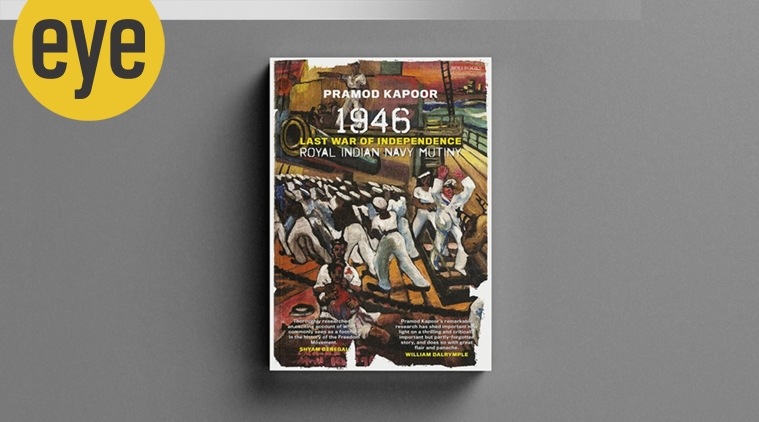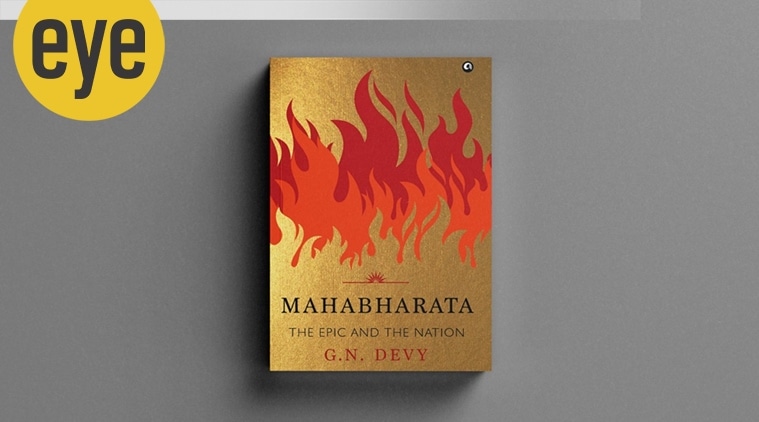© The Indian Express Pvt Ltd
Latest Comment
Post Comment
Read Comments
 Portrait of Jagdish Swaminathan with Mr and Mrs Jangarh Singh Shyam (Credit: Jyoti Bhatt, courtesy Jyoti Bhatt Archive, Asia Art Archive)
Portrait of Jagdish Swaminathan with Mr and Mrs Jangarh Singh Shyam (Credit: Jyoti Bhatt, courtesy Jyoti Bhatt Archive, Asia Art Archive)Imagine a forest: The art of Gond artist Jangarh Singh Shyam and its enduring legacy twenty years after his death
Artist Venkat Raman Singh Shyam distinctly remembers the morning of July 3, 2001, when he received the news that his uncle and mentor Jangarh Singh Shyam was no more. He was in the middle of painting a hoarding in Bhopal and found it difficult to believe that a homesick Jangarh had committed suicide during a three-month residency at the Mithila Museum in Japan’s Niigata. This was Jangarh’s third visit to the country. He seemed to have been enthralled by Japan and had even named his daughter Japani, but he had been reluctant about this trip.
Why Bridgerton Season 2, despite its many shortcomings, is a satisfying slow burn
 A still from the web-series Bridgerton Season 2. (Credit: Liam Daniel/Netflix)
A still from the web-series Bridgerton Season 2. (Credit: Liam Daniel/Netflix)
There’s a perfectly admissible explanation for the Kate Sharma-Appa-Bon-Didi problem. Perhaps, Kate’s mother was Tamil, and “Appa” is Kate’s way of honouring her roots. Perhaps, she calls Edwina “bon” (the Bengali “bone” means younger sister) as an inside joke between the two. Edwina is fluent in Marathi, which is understandable as the Sharmas are from Bombay. Perhaps, their father, a clerk, was smart to learn the local language (Gujarati would have been of interest, too). Any number of conjectures could untangle this caricature of an Indian family that Bridgerton served this season, drawing flak from Indian audiences for its wilful ignorance and poor understanding of India’s complexities.
When Arun Shourie joked about being the only editor to be sacked twice from an organisation
 Arun Shourie at Indian Express Office in October 1995. (Express archive photo by Sunil Saxena 28.10.1995)
Arun Shourie at Indian Express Office in October 1995. (Express archive photo by Sunil Saxena 28.10.1995)
Arun Shourie rocked the rather staid Indian newspaper world back in the Seventies and Eighties. Though trained as an economist, he left an indelible mark on Indian journalism with his insightful, well-researched crusading campaigns which, at times, changed the course of politics; brought about new legislation and focused public attention on governmental corruption. Some of the investigative series he either wrote or oversaw — the prolonged detention of thousands of undertrials, the blinding of prisoners in Bihar to serve as a deterrent, the Kamala case which exposed trafficking of women, the scandal of the missing Kuo Oil deal file, the Antulay trusts and Bofors — are landmarks in journalism history and public interest litigation. The Indian Express stories regularly sparked off a furore in Parliament, compelling the government to respond.
Nobody really knew Anthony Bourdain. And that’s alright
 Who really was Tony Bourdain — a writer with a burning ambition, a victim of near-crippling imposter syndrome, a celebrity made deeply uncomfortable by his fame, a heroin and crack addict, a hedonist, a mentor, a middling chef, an overgrown child?
Who really was Tony Bourdain — a writer with a burning ambition, a victim of near-crippling imposter syndrome, a celebrity made deeply uncomfortable by his fame, a heroin and crack addict, a hedonist, a mentor, a middling chef, an overgrown child?
Biographies, it is well-known, are not entirely reliable as far as telling the truth is concerned. This has been so right from when the art of the biography started to be recognised as a distinct branch of literature: James Boswell was accused of manipulating quotes to suit his perspective in The Life of Samuel Johnson (1791), while Elizabeth Gaskell was pilloried for trying to scrub away all evidence of her subject’s “immorality” — such as her love for a married man — in The Life of Charlotte Brontë (1857). Trouble with the “truth” — however one might interpret the word — seems to plague all kinds of biographies even today and it could be the same with Bourdain in Stories, the biography of the late Anthony Bourdain.
How an uprising at a Bombay dock quickly turned into India’s last war of independence
 1946 Royal Indian Navy Mutiny: Last War of Independence; By Pramod Kapoor; Roli Books; 432 pages; Rs 695 (Photo: Amazon.in)
1946 Royal Indian Navy Mutiny: Last War of Independence; By Pramod Kapoor; Roli Books; 432 pages; Rs 695 (Photo: Amazon.in)
The past in India, as in most other parts of the world, has often been a contested terrain. Official interpretations, including those in textbooks, are known to privilege the victors. Scholars have, of course, engaged creatively with lesser-known aspects of the past and contested official history creditably. However, such history writing rarely sees light outside academia and scholarly circles.
The 1946 revolt by ratings — common sailors — of the Royal Indian Navy is one such event. Despite enjoying popular support, the sailors couldn’t convince the dominant sections of the country’s nationalists. After Independence, their heroism was almost completely blanked out of official discourse.
GN Devy’s latest book, The Mahabharata, yields the kind of confident scholarship about Indian thought that is becoming increasingly rare
 Mahabharata: The Epic and the Nation; By GN Devy; Aleph Book Company; 152 pages; Rs 499 (Photo: Amazon.in)
Mahabharata: The Epic and the Nation; By GN Devy; Aleph Book Company; 152 pages; Rs 499 (Photo: Amazon.in)
The Mahabharata, in its most important aspect, is a sublime work of art in the sense the German philosopher Martin Heidegger used the term. Through it, an entire world is opened up, terms of reference and relationships defined.
But it is not easy, in the times we live in, to engage with the layers of history and memory, the archetypes and the cliches, that form the Mahabharata in its many versions. GN Devy’s Mahabharata: The Epic and the Nation is literary criticism at its best: It gives the reader perspective and insight, finding novelty in the familiar, and unpacks for her the complexity of the epic.
What Mother Nature missed out on
 Why legs may be better than wheels! (Credit: Wikimedia Commons)
Why legs may be better than wheels! (Credit: Wikimedia Commons)
It really is a bit galling: you think of any “great” invention of ours and you’ll find that good old Mother Nature and her evolutionary engineering department had got there, done it millions of years earlier, turning us into nothing but copycats — and nowhere as good as her. So, she had planes: bats, all those monstrous flying lizards, birds and insects; of course, helicopters: spiraling seed pods; submarines: fish; and parasailing baby spiders, et al. She could produce very efficient cold light in the blackness of the ocean depths and had the technical prowess to zap you with a 600-volt electric shock. She could sense the Earth’s magnetic and gravitational fields and the faintest electrical signals given out by living bodies. She was in the arms race and into chemical warfare much before we thought they were ideas we could use. She seemed to have invented everything needed — offensive or defensive — for the survival of the billions of life forms she evolved.


